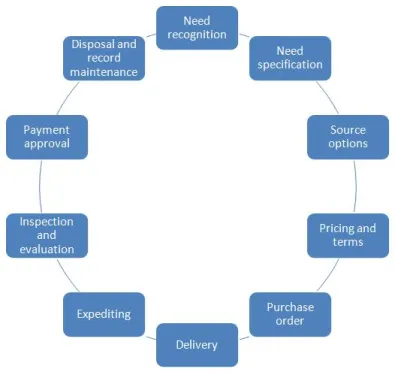Process vs. Procedure: Which One Should You Focus on to Achieve Your Goals?
- donnariekepro
- Jul 26, 2024
- 3 min read
In the realm of business and organizational management, the terms "process" and procedure are often used interchangeably. However, they refer to distinct concepts that play different roles in achieving organizational goals. Understanding the differences between processes and procedures is crucial for optimizing efficiency, ensuring compliance, and enhancing overall performance. In this blog, we will explore these differences and guide you on which to focus on to meet your objectives effectively.
What is a Process?
A process is a high-level sequence of activities or tasks designed to achieve a specific outcome. It is a broad concept that outlines the flow of work from start to finish, involving multiple steps, decision points, and interdependencies. Processes are often visualized as flowcharts or diagrams, illustrating how various elements interact to produce a desired result.
Key Characteristics of Processes:
Broad Scope: Processes encompass a wide range of activities and can span across different departments or functions.
Outcome-Oriented: The primary focus of a process is the end result, such as producing a product, delivering a service, or achieving a specific goal.
Flexibility: Processes are adaptable and can be adjusted based on changing conditions, new technologies, or evolving business needs.
Examples of Processes:
Product development
Customer onboarding
Order fulfillment
What is a Procedure?
A procedure, on the other hand, is a detailed set of instructions that describes how to perform a specific task within a process. Procedures are more granular than processes and focus on the "how" rather than the "what." They provide step-by-step guidance, ensuring consistency, accuracy, and compliance with standards or regulations.
Key Characteristics of Procedures:
Detailed and Specific: Procedures provide explicit instructions for completing a task, often including tools, materials, and safety guidelines.
Task-Oriented: The primary focus of a procedure is on the execution of specific tasks rather than the overall outcome.
Standardization: Procedures are designed to standardize operations, reduce variability, and ensure quality control.
Examples of Procedures:
How to operate a specific machine
How to handle customer complaints
How to conduct a safety inspection
Process vs. Procedure: Which Should You Focus On?
The decision to focus on processes or procedures depends on your organizational goals, the nature of your operations, and the level of detail required.
Focus on Processes When:
You aim to optimize the overall workflow and improve efficiency.
You need to understand and map out the big picture of how different tasks and departments interact.
Your goal is to innovate, adapt to changes, and continuously improve operations.
Focusing on processes is essential for organizations looking to streamline operations, reduce bottlenecks, and improve coordination across departments. It helps in identifying redundancies and opportunities for automation, ultimately enhancing productivity and customer satisfaction.
Focus on Procedures When:
You need to ensure consistency and accuracy in performing specific tasks.
Compliance with regulations, standards, or safety protocols is critical.
You are onboarding new employees or implementing new equipment or technologies.
Emphasizing procedures is crucial for maintaining quality control, minimizing errors, and ensuring that tasks are performed correctly every time. This focus is particularly important in industries with strict regulatory requirements, such as healthcare, manufacturing, or finance.
Integrating Processes and Procedures
In practice, processes and procedures are complementary. Processes provide a high-level view of the workflow, while procedures offer detailed instructions for specific tasks. An integrated approach that considers both elements is often the most effective way to achieve organizational goals.
For instance, a manufacturing company might focus on optimizing its production process while also developing detailed procedures for operating machinery, ensuring both efficiency and safety.
Conclusion
In summary, both processes and procedures play vital roles in achieving organizational goals. While processes offer a broad perspective on how work flows through the organization, procedures provide the necessary detail to ensure tasks are completed correctly. By understanding when and where to focus on each, organizations can enhance efficiency, maintain quality, and drive continuous improvement. Whether you're aiming for innovation, compliance, or operational excellence, a balanced approach that integrates both processes and procedures is key to success. SITES WE SUPPORT
SOCIAL LINKS




Comments